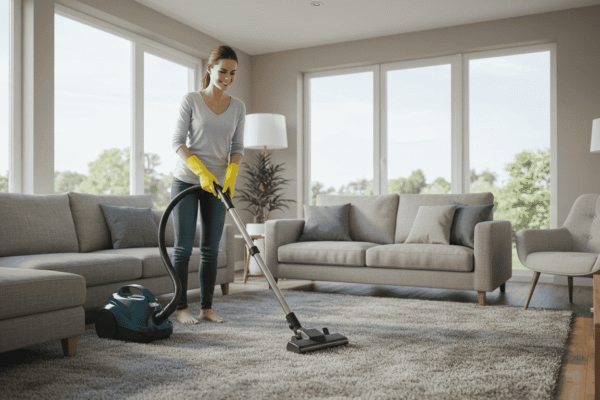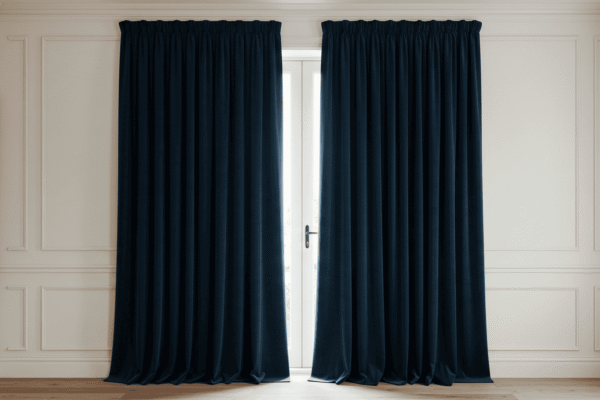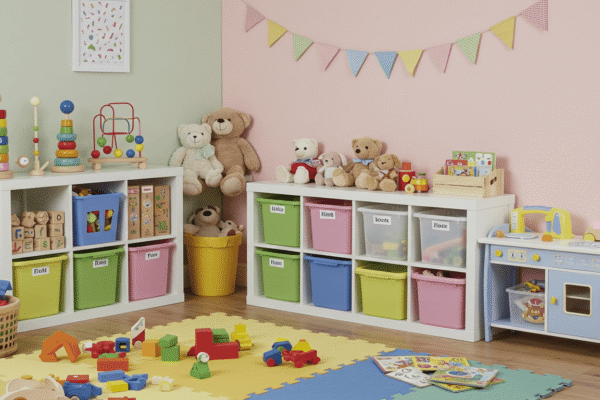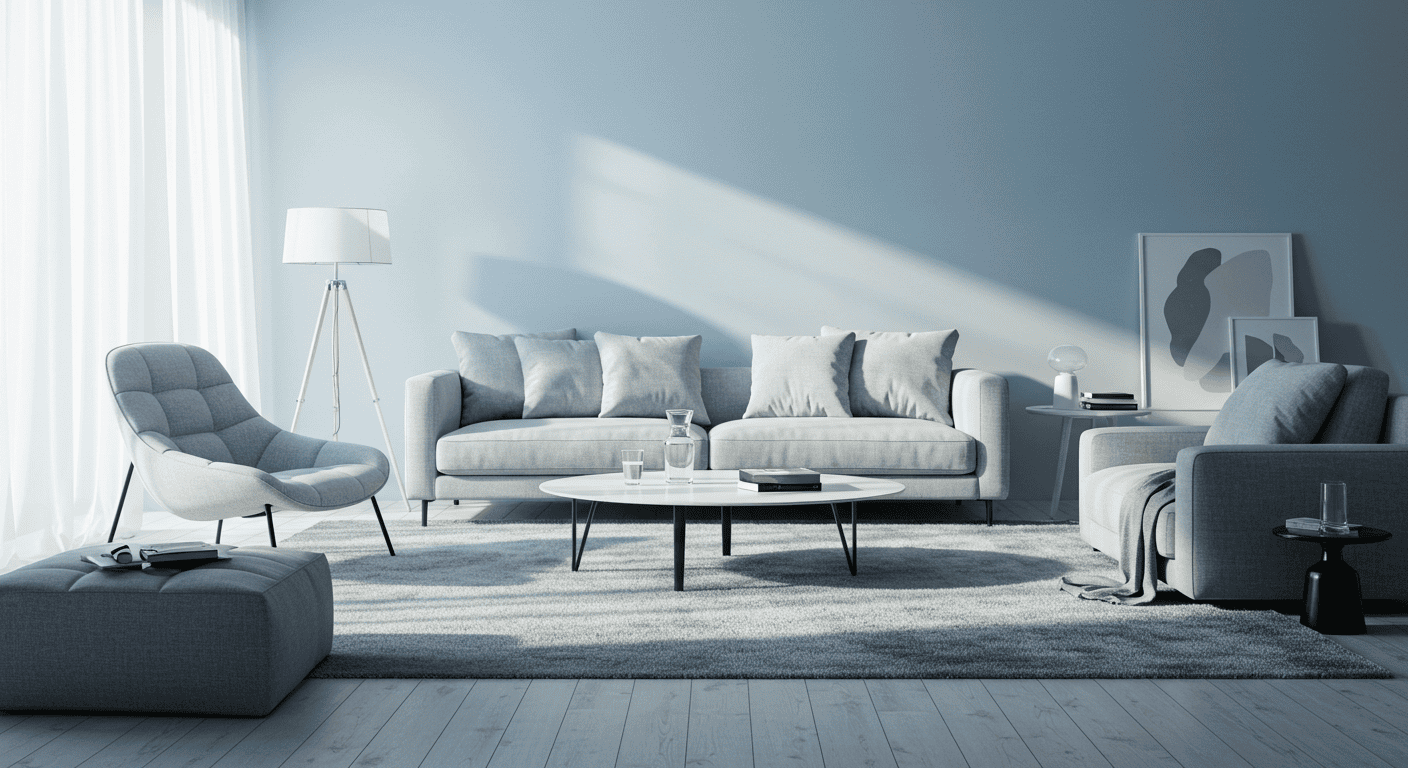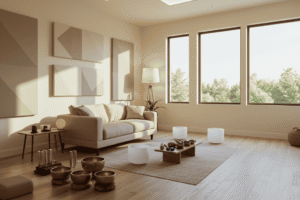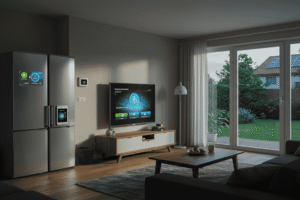How to keep your house cool naturally is more than just a trendy idea—it’s a smart, sustainable way to beat the heat without relying on energy-hungry air conditioning. With rising temperatures and growing energy costs, learning to cool your home naturally not only saves money but also reduces your environmental footprint. In this guide, you’ll discover eco-friendly, practical, and even a few surprisingly simple ways to stay comfortable indoors—no AC needed. Let’s dive into smart solutions that actually work, from airflow hacks to natural insulation tips and cooling houseplants.
Understand How Heat Enters Your Home
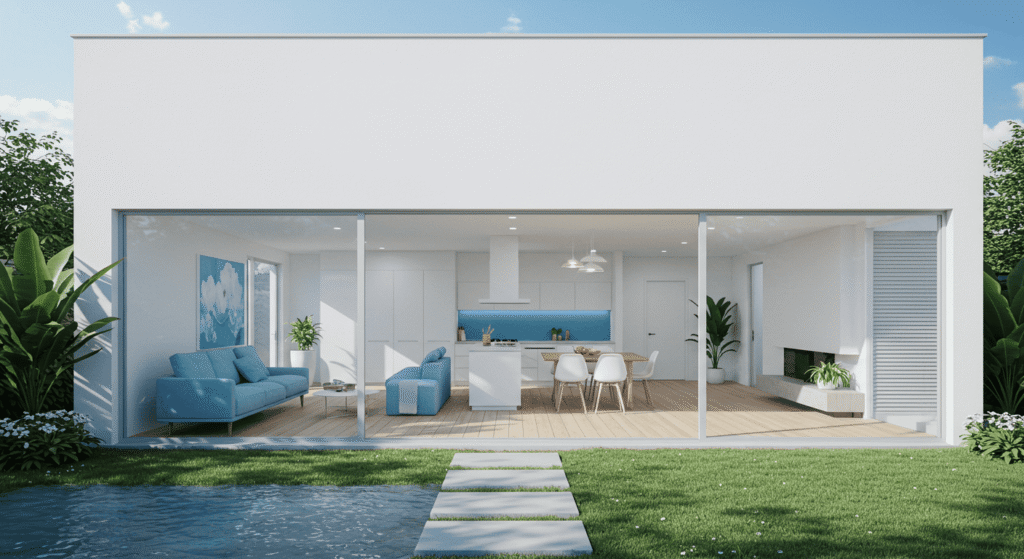
Before you can effectively cool your home naturally, it’s important to know how and where heat actually gets inside. Most homes absorb heat through a few key areas—some more than others. By identifying these common heat entry points, you can take targeted steps to reduce indoor temperatures without relying on air conditioning.
Common Entry Points for Heat
Roof
The roof is one of the largest exposed surfaces of your home and a major contributor to indoor heat gain. Especially in homes with poor or outdated insulation, the roof can absorb sunlight all day and radiate that heat downward into living spaces.
Windows
Glass allows sunlight to pass through, heating rooms like a greenhouse. Unshaded or single-pane windows can account for up to 35% of unwanted heat in your home. Fortunately, simple fixes like reflective window films, thermal curtains, or exterior shades can make a big difference.
Walls
Walls—especially those facing the sun—absorb and store heat, slowly releasing it into your home. Lighter exterior paint colors and better wall insulation can significantly reduce heat transfer.
Heat Retention vs. Heat Generation
It’s essential to understand the difference between heat retention (passive buildup of outdoor heat) and heat generation (heat created inside your home). Retention comes from the sun hitting your house; generation happens from cooking, electronics, and daily activity. Targeting both helps maximize the effect of natural cooling methods.
Below is a simplified look at where your home typically loses its cool and how to fix it using natural solutions:
Where Your Home Loses the Cool
| Area | % Heat Entry | Natural Fix |
|---|---|---|
| Roof | 25% | Add insulation or cool roofing |
| Windows | 35% | Use reflective films or thick curtains |
| Walls | 15% | Paint in lighter colors |
Understanding these key heat sources gives you the power to make informed, energy-free adjustments that truly help keep your house cool naturally.
Use Smart Ventilation for Maximum Airflow
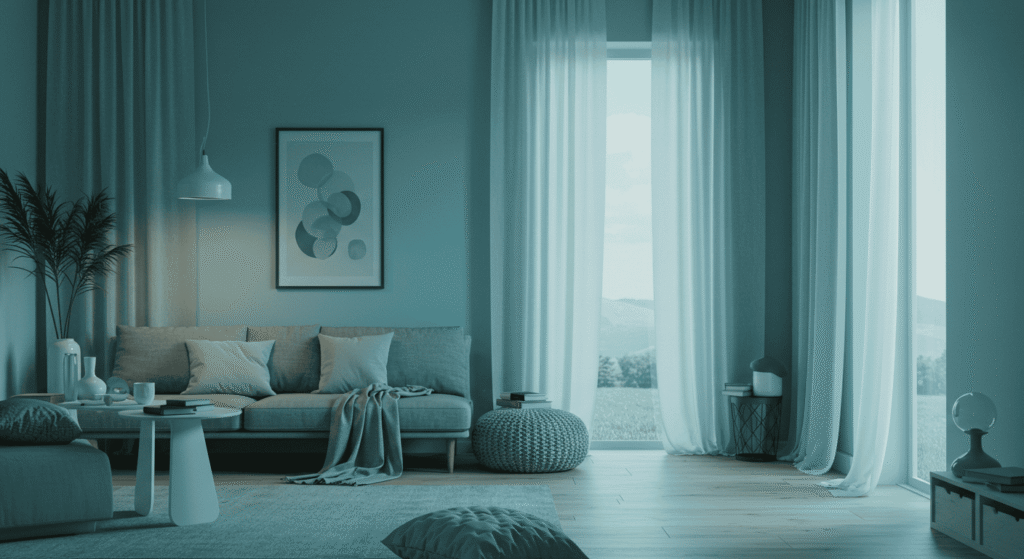
One of the most effective ways to cool your home naturally is by improving airflow through smart ventilation techniques. Proper ventilation helps remove hot air from inside your home and replaces it with cooler outdoor air, reducing the need for artificial cooling. Let’s explore how to optimize airflow to keep your indoor environment comfortable.
Master Cross-Ventilation
Cross-ventilation occurs when air flows freely from one side of your home to the other, creating a natural breeze that cools your living spaces. To achieve this, position windows and doors directly opposite or diagonally across from each other, allowing fresh air to enter and warm air to exit efficiently.
Transom windows—small windows placed above doors or other windows—can also improve airflow by allowing warm air to escape even when doors are closed. Additionally, keeping hallways and interior doors open helps the air circulate more freely throughout your home.
Cool Air In, Hot Air Out
Timing plays a crucial role in natural ventilation. During cooler parts of the day, such as early mornings and evenings, open windows to let the cool air inside. During the hottest parts of the day, keep windows closed and curtains drawn to block out heat.
Using fans strategically can amplify natural airflow. Position fans near windows or doorways to push hot air out or pull cool air in. Ceiling fans are also great for circulating air evenly, enhancing the cooling effect.
Below is a simple guide on the best times to ventilate your home to maximize natural cooling:
Best Times to Ventilate Based on Time of Day
| Time | Action | Why |
|---|---|---|
| Early Morning | Open windows | Air is coolest |
| Midday | Close windows + curtains | Keep out heat |
| Evening | Re-open for air circulation | Let heat escape |
By mastering these ventilation strategies, you can significantly reduce indoor temperatures and keep your house cool naturally without the need for air conditioning.
Insulate Smarter, Not Just More
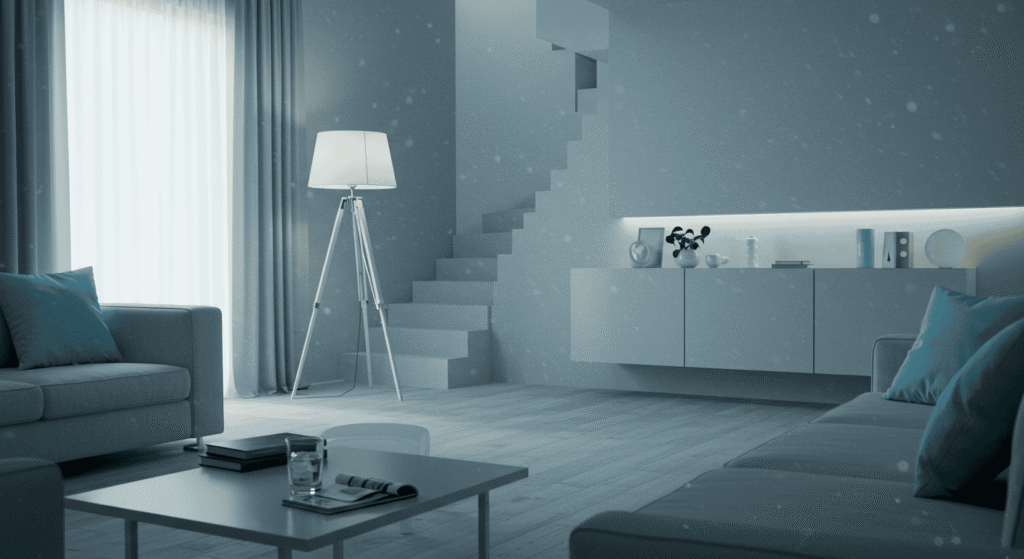
When thinking about how to cool your home naturally, insulation might sound like something you only need in winter, but the truth is that good insulation works both ways—it keeps the heat out during summer and the warmth in during winter. However, it’s not just about piling on more insulation; it’s about insulating the right areas with the right materials.
Focus Areas to Insulate
The most important places to focus on are your attic, crawl spaces, and windows. The attic often accounts for a significant portion of heat transfer because it’s directly exposed to the sun’s rays. Proper attic insulation creates a barrier that stops heat from entering your living spaces.
Crawl spaces can also be a source of unwanted heat if they’re not sealed or insulated properly. And windows—often the weakest link in insulation—should not be overlooked. Using weather stripping or thermal seals around window frames can reduce heat infiltration.
Lightweight Summer Insulation Tricks
Not all insulation needs to be bulky or permanent. During hot months, simple additions like draft blockers under doors or fabric panels over windows can help reduce heat transfer without major renovations. These solutions are affordable, easy to install, and perfect for renters or anyone looking for temporary relief.
Bonus: Natural Insulation Materials
For those wanting an eco-friendly approach, there are natural insulation materials that are safe, affordable, and sustainable. Options such as wool, cotton batting, and recycled denim not only provide excellent thermal protection but also improve indoor air quality by avoiding harmful chemicals found in some synthetic insulations.
By insulating smarter and focusing on key areas with thoughtful materials, you can effectively reduce indoor heat and cool your home naturally while also contributing to a greener lifestyle.
Block Heat with Natural Barriers
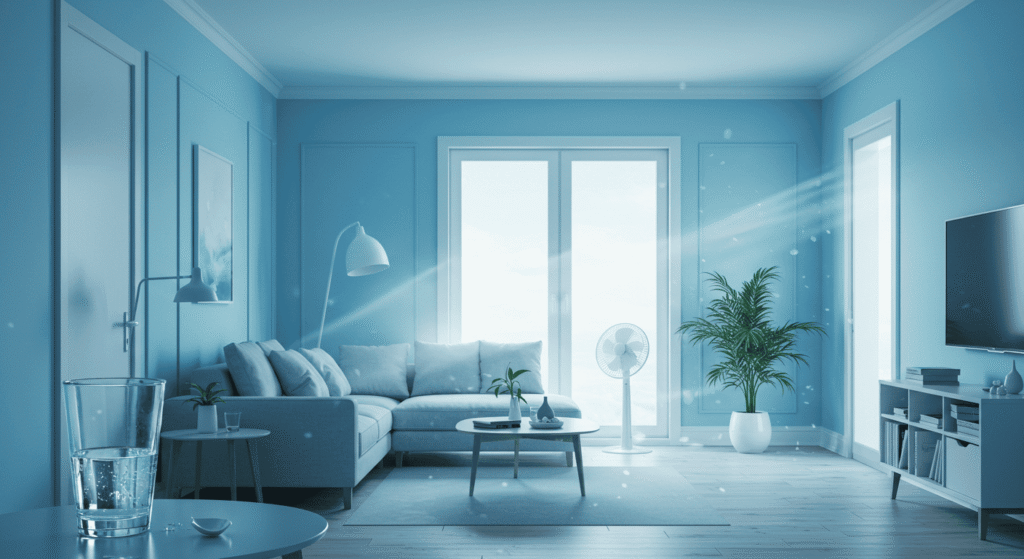
One of the easiest and most effective ways to cool your home naturally is by blocking heat before it even enters your living spaces. Using natural barriers like curtains, shades, and window treatments can drastically reduce indoor temperatures, making your home more comfortable without cranking up the AC.
Use of Thermal Curtains & Shades
Thermal curtains and shades are specially designed to reflect sunlight and reduce heat gain. For maximum effect, place them on windows that receive the most direct sun, typically the east and west-facing sides of your home. Closing these curtains during the hottest parts of the day can block a significant amount of solar heat.
Timing is key: open curtains in the morning to let in cool air when temperatures are lower, then close them by mid-morning and keep them shut until late afternoon. This simple habit can lead to noticeable indoor cooling.
Window Hacks That Work
Beyond curtains, other window treatments like reflective films and exterior shutters can also help block heat naturally. Reflective films reduce glare and bounce back a large percentage of solar radiation, while exterior shutters provide a physical barrier to the sun’s rays before they hit your windows.
Both solutions are low maintenance and can be combined with curtains for even greater cooling power.
Sun Direction Guide
Knowing which windows to shield based on sun direction makes your heat-blocking efforts more efficient. Use the table below as a quick reference for when and where to apply natural barriers:
| Window Direction | Best Action | Reason |
|---|---|---|
| East | Close curtains/shades early morning | Blocks strong morning sun |
| South | Use reflective films + curtains midday | Minimizes midday heat gain |
| West | Close curtains/shades late afternoon | Prevents harsh afternoon sun |
Applying these natural barriers thoughtfully allows you to significantly reduce heat buildup and keep your house cool naturally, all while enhancing your home’s comfort and energy efficiency.
Leverage Evaporative Cooling
Evaporative cooling is a powerful yet natural method to cool your home naturally by harnessing the simple process of water evaporation. This technique can significantly reduce indoor temperatures without using electricity, making it an eco-friendly and cost-effective alternative to traditional air conditioning.
How Evaporative Cooling Works
Evaporative cooling happens when water absorbs heat from the air and changes from liquid to vapor, thereby lowering the surrounding temperature. This process naturally cools the air around it, creating a refreshing effect. It’s the same principle behind sweating, which cools your body by evaporating moisture from the skin.
In homes, evaporative cooling can be applied using water sources or moisture-enhancing methods to help reduce heat, especially when combined with proper airflow.
DIY Cooling Ideas That Actually Work
There are several easy ways to bring evaporative cooling into your home. For example, hanging damp sheets or towels over open windows allows incoming warm air to be cooled as it passes through the moisture. Indoor fountains or bowls of water placed near fans can also enhance evaporation and circulate cooler air.
These simple tricks are inexpensive and easy to set up, making them ideal for anyone looking to cool their home naturally without installing complex equipment.
When to Use (and Not Use) This Method
While evaporative cooling can be very effective, it works best in dry climates where humidity levels are low. High humidity areas may find this method less effective or even uncomfortable, as added moisture can make the air feel heavier.
Before relying on evaporative cooling, consider your local climate to determine if this natural technique is a good fit for your home’s cooling needs.
Bring Nature Indoors: Cooling with Plants
One of the most enjoyable and natural ways to cool your home naturally is by incorporating houseplants that improve air quality and help regulate indoor temperatures. Beyond their aesthetic appeal, certain plants actively contribute to cooling by releasing moisture and providing shade indoors.
Houseplants That Help Lower Temperatures
Some plants are especially effective at cooling because they increase humidity through a process called transpiration—where water evaporates from leaves—helping to cool the surrounding air. Popular choices include the snake plant, areca palm, aloe vera, and peace lily. These plants not only reduce heat but also purify the air, making your home healthier and more comfortable.
Strategic Plant Placement for Best Results
For maximum cooling effect, place these plants near windows where they can absorb indirect sunlight and near entryways or corners to enhance airflow and humidity distribution throughout the room. Grouping plants together can also create a microclimate that naturally lowers temperature in the immediate area.
Below is a quick guide to some effective cooling plants, their benefits, light requirements, and care needs:
| Plant | Cooling Benefit | Light Needs | Maintenance |
|---|---|---|---|
| Aloe Vera | Humidity control | Bright, indirect | Low |
| Areca Palm | Natural humidifier | Moderate light | Medium |
| Snake Plant | Air purification | Low to bright light | Low |
| Peace Lily | Moisture release | Low to medium light | Medium |
Adding plants is a simple, visually pleasing way to support natural cooling while improving your home’s atmosphere. Plus, tending to plants can be a relaxing hobby that enhances your overall well-being.
Shade Your Outdoor Spaces
To effectively cool your home naturally, don’t forget the impact of outdoor shading. Creating shaded areas outside your house helps block direct sunlight from heating your walls and windows, reducing the amount of heat transferred indoors. Thoughtful shading also makes your outdoor living areas more comfortable during hot days.
Exterior Shading Techniques
There are several ways to provide natural shade around your home. Structures like pergolas and awnings offer flexible, stylish shade solutions that can be customized to your space. Climbing vines on trellises or walls add both shade and greenery, cooling surfaces through evapotranspiration.
Planting shade trees strategically is one of the most effective methods. Deciduous trees placed on the south and west sides of your house provide dense shade during summer, while allowing sunlight through in winter when their leaves fall.
Ground-Level Cooling Tricks
The materials used around your home’s foundation and pathways can influence how much heat is reflected or absorbed. Light-colored pavers and gravel reflect sunlight, reducing heat buildup near your home’s base. These surfaces also prevent heat from radiating upward, keeping the air around your home cooler.
Passive Cooling via Landscaping
Landscaping with greenery creates cool microclimates by increasing shade and humidity through plant transpiration. Dense shrubs, ground covers, and garden beds near your home’s walls can block and absorb heat, acting as natural insulators.
Combining outdoor shading with smart landscaping is a powerful way to cool your home naturally from the outside in—helping reduce indoor temperatures and energy use while enhancing your property’s beauty.
Lifestyle Habits That Help Keep It Cool
While structural changes and smart ventilation are key, adopting the right daily habits can make a big difference when you want to cool your home naturally. Small lifestyle tweaks help minimize indoor heat generation and maximize natural cooling, keeping your living space comfortable all day long.
Heat-Reducing Daily Practices
Unplugging unused electronic devices is a simple but effective way to reduce heat buildup. Many devices generate heat even when idle, so cutting off power can help keep your home cooler.
Another important habit is limiting oven and stove use during the hottest parts of the day. Cooking generates significant heat, so try preparing meals during cooler morning or evening hours, or choose no-cook recipes when possible.
Natural Nighttime Cooling Routine
Nighttime is your chance to reset your home’s temperature naturally. Before going to bed, close curtains and blinds to trap cooler night air inside and block daytime heat buildup.
Opening windows after sunset lets in refreshing cool air, and placing a bowl of ice or a cold water spray near a fan can enhance the cooling effect while you sleep. This routine helps ensure a comfortable and restful night without relying on air conditioning.
Evening Prep for a Cooler Night
| Task | Done ✅ |
|---|---|
| Close blinds by 10 AM | |
| Unplug electronics by 6 PM | |
| Open bedroom windows after sunset | |
| Place bowl of ice near fan |
By incorporating these habits into your daily routine, you can enjoy a naturally cooler home and better sleep, all while reducing energy consumption.
How to Cool Your Home Naturally: Final Tips for Lasting Comfort
Learning how to cool your home naturally doesn’t have to be complicated or costly. By understanding heat flow, using smart ventilation, insulating wisely, and embracing simple lifestyle habits, you can create a comfortable living space without relying on air conditioning. Incorporating natural barriers, plants, and outdoor shading further enhances your home’s cooling potential while supporting energy savings and eco-friendliness.
Start applying these practical tips today to enjoy a cooler, healthier home all year round—naturally and sustainably.




